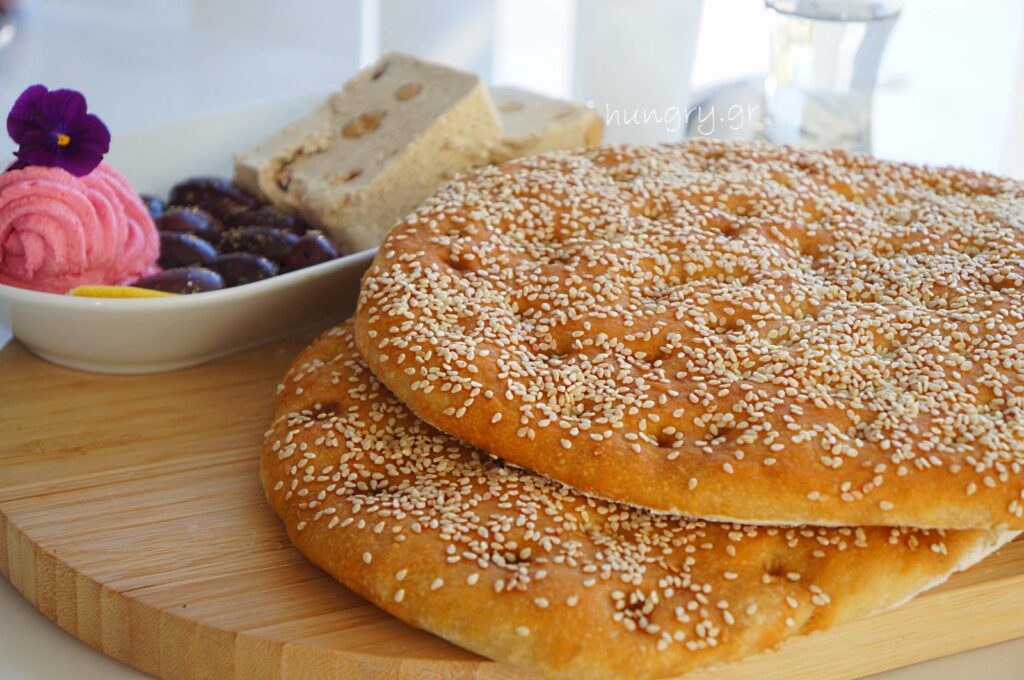Some may not put seafood on the Clean Monday (Καθαρά Δευτέρα) lunch table, but a lagana or two is never missing. It is worth getting to know the ultimate bread of fasting and learning how to make better use of it.
Lagana, the flat bread with minimal crumb, crispy crust and distinct sesame aroma, is a classic choice among the foods of Clean Monday, with its flavour marking the beginning of the fast of Great Lent.
It is unleavened bread and its name comes from the ancient Greek “laganon”, which was a flat dough made of flour and water.

A little history
Both its history and the tradition that forces its presence on the table to this day are so old that they are lost in the centuries.
Lagana, therefore, is mentioned as a bond in many texts of antiquity, such as the Ecclesiastes of Aristophanes, where we find the phrase “lagana pettettai” which means “lagans are made”, Olive Magazine explained.
However, the connection of this bread with fasting is probably connected to the fact that such unleavened bread was consumed by the Israelites during their exit from Egypt.
From that time until the time when Christ blessed leavened bread, the consumption of unleavened bread was required during the Passover.

Today, of course, we consume it mainly on the first day of fasting, which is why many recipes for lagana do not even include oil. So, on Clean Monday, the bakers work feverishly to prepare this delicious bread, which goes well with the rest of the Lenten dishes and especially with the taramosalata, tahini and halva.
How it is made
The traditional recipe only requires flour, water, salt, some herbs, such as anise for aroma and of course, plenty of sesame (white and black) on its surface.
However, there are also new and very creative versions of it, which are not inferior in taste at all, while they also give a more special taste to the Clean Monday table.

So we try very delicious laganas with wholemeal flour, with green and black olives, with sun-dried tomatoes, with pepper, with onion and with many more delicious ingredients that the bakers add to the dough.
Some ideas based on lagana
As we said, lagana is the star of the fasting table as the bread that accompanies the rest of the dishes. But there are more and more imaginative ways to present it. With lagana, we can make very tasty canapés.
How? Cut the lagana into thin slices and top it with taramosata, olives and dill or fava beans and octopus or tahini and shrimps. The dishes of that day are many and the possible combinations even more so use your imagination.
And with the leftover lagana?
* You can make very aromatic croutons and nuts. Cut the lagana into cubes or thin slices, depending on what you want to make, spread them on a baking sheet lined with parchment paper, pour a little olive oil over them and bake at 200°C until they are rosy red.
* If you let the lagana dry too much, you can grind it in the blender, creating galette with a distinct aroma.
* You can also soak it in water, squeeze it and make taramokeftes or nice bread balls with it.
READ MORE: Our Top 10 most loved Greek dishes.


